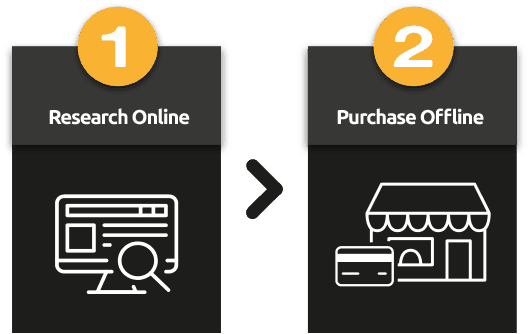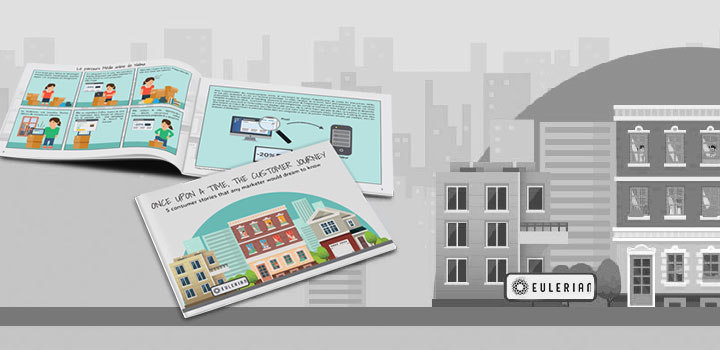Home > Blog > Tips > Stages of “Research Online Purchase Offline” (ROPO)
Buyers via the Internet are increasing. According to Médiamétrie – Observatory of Internet Uses – Q1 2018 [1], 37.5 million of French people buy on the Internet (vs 36.6 million in 2017), or 85.5% of Internet users, of which 30% have already made a purchase from their mobile.
Attribution White Paper, understand the challenges. Download it now!
The uses are different and the arrival of retailers only present on the web, such as Amazon or Cdiscount, began a fierce competition for brands that redoubled their efforts to stand out through advertising campaigns.
In all consistency with this inventory, it is the online world that has a nice share in terms of advertising investments. They confirm their leading position in the media mix (39.2%) with an increase of 4.7 points (vs. S1 2017)[2].
However, do not get mistaken, the offline world is not over, far from it. Indeed, the physical signs continue to have a place of choice in the customer journey, even a preponderant place in certain sectors, like the automobile industry. According to a study by GFK [3], 82% of buyers go to a dealership to test cars they have previously chosen on the Internet.
Thus, if the client reached by online campaigns and starts his journey, he can still completely finish his purchase offline. An omnicanality that is a reality but especially a real headache for marketers who must be able to identify the impacts of each marketing channel on each of the sales. How to prove that an online campaign could impact an offline conversion?

This type of analysis is grouped under a term that you have already heard, the ROPO for Research Online Purchase Offline. This is to try to highlight the number of users who have followed the journey previously mentioned: advertising, online search and finally offline conversion.
Here are 5 steps for you to finally get your first ROPO insights:
1. Find a way to identify offline sales (e.g. loyalty cards, e-mail request at the cash register)
2. Synchronize your offline sales with your attribution tool: periodically send sales that will be reconciled based on a common ID (e.g. mail, phone).
3. Understand what does the ROPO effect represents for your business:
- isolate offline sales
- look at those that have been linked to a marketing history.
- identify the% of offline sales in ROPO
- identify the% of ROPO sales in global
- Learn the ROPO journey vs the online journey by itself: identify the product families and audiences involved.
4. Understand the relationship of each channel in online vs ROPO: are there any significant differences between the channels that convert the most?
5. Design the Media Customer Journey linked to the ROPO journey: How many touches is it composed by? Do branding campaigns have an impact? What are the complementary channels? Etc.
As you will have understood, the ROPO is not only a journey but also an analysis that must be carried out cyclically. These are the first insights you will get that will allow you to evangelize practices, to show that online investments impact the offline and that some are obviously more effective deserving a proper valuation.
It will then start again in a second wave of analysis that will allow you to make decisions on your media mix and put them into practice.
[1]https://www.fevad.com/chiffres-cles-cartographie-e-commerce-2018/
[3]https://www.gfk.com/fr/insights/news/le-nouveau-parcours-dachat-automobile/



